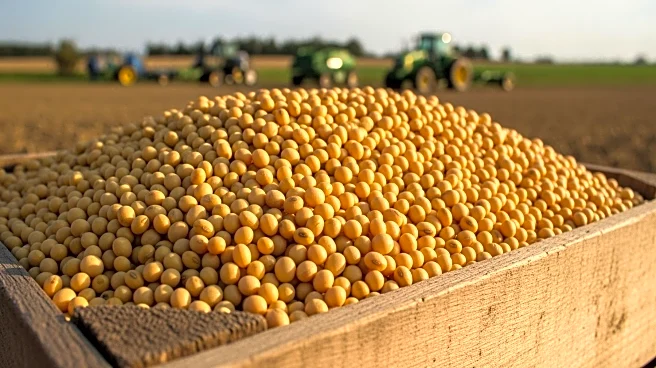What's Happening?
The United States controlled release fertilizers market is anticipated to grow significantly, reaching an estimated value of USD 4,288.4 million by 2031. This growth is driven by the increasing demand for sustainable agriculture practices and the need
to enhance crop yields while minimizing environmental impact. Controlled release fertilizers (CRFs) are designed to release nutrients gradually, improving nutrient use efficiency and reducing environmental pollution. The market is supported by advancements in polymer coating technologies and nutrient release mechanisms, which enhance fertilizer efficiency and sustainability. Key players in the market include Haifa Group, Nutrien Ltd., and Tagrow Co., Ltd., who are focusing on strategic expansions and research and development investments to meet rising demand.
Why It's Important?
The growth of the controlled release fertilizers market is significant for the U.S. agriculture sector, as it aligns with the increasing emphasis on sustainable farming practices. By improving nutrient use efficiency and reducing nutrient loss, CRFs contribute to higher crop productivity and quality, which is crucial for meeting the food demands of a growing population. Additionally, the adoption of CRFs helps mitigate environmental issues associated with conventional fertilizers, such as nutrient runoff and leaching, thereby supporting environmental regulations and sustainability goals. This market expansion also presents opportunities for economic growth and innovation within the agricultural industry.
What's Next?
As the market for controlled release fertilizers continues to expand, companies are likely to invest further in research and development to create more efficient and environmentally friendly products. The focus will be on developing customized solutions for various crops and growing conditions, which could lead to increased adoption of CRFs across different agricultural sectors. Additionally, strategic expansions in supply chains and distribution networks are expected to enhance market reach and accessibility. Stakeholders, including farmers and agricultural businesses, may need to adapt to these changes by integrating CRFs into their practices to remain competitive and sustainable.













